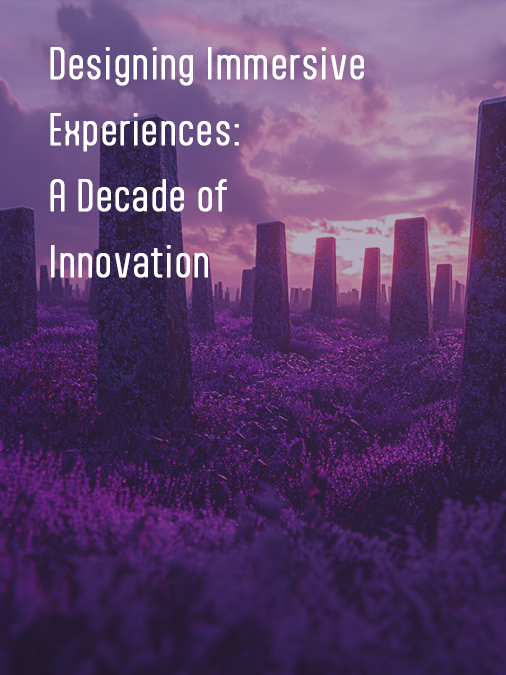Throughout my career, I’ve been tasked with tackling many seemingly insurmountable design challenges. From conceptualizing a smart city in Anaheim to creating visuals for Coachella, I’ve found that the same methodology can ensure continual progress in even the most difficult design scenarios: working from thick to thin.
This may sound like an obvious roadmap for any production, but what many teams lack is the finesse of the master of working thick to thin: Bob Ross. Ross emphasized the importance of this step-by-step process, blending organic design with a sense of non-attachment. As digital designers, it’s easy to get lost in the intricate details of a tree or rock when we should be focusing on the dynamics of the overall horizon.
When familiarizing myself with a new project, I first like to understand the canvas on which we’re painting. Are we developing a product? A movie? A permanent LED installation? If you view the entire experience through a blurred lens, what tones, textures, and feelings would be exciting? At this stage, it’s crucial to remove subjective bias and think about your design in a universal language. Hopefully, a BIG idea or feeling will begin to spark at this point. ✨
Now it’s time to bring out the broad paint roller. We select our topics, define our attitude, and highlight the magical corners that contribute to memorability. At this moment, team synergy and healthy collaboration are paramount; inexperienced artists often rush ahead without a roadmap at this phase (it is exciting, after all!). Compassionate leadership should seize this opportunity to demonstrate their experience by laying down those first broad strokes with the grace of an experienced calligrapher.
I’ve noticed that most designers LOVE the medium brush. They never want to put it down; the joy of bringing an idea to life that didn’t exist before is unexplainable to the non-artist. However, this comes at a cost—many times, I’ve seen teams become so absorbed in medium-level details that the overall composition suffers. One lesson we can learn from Bob Ross is the right amount of time to spend painting those happy little clouds.
If you’ve progressed far enough in your project to finally pick up the fine-tipped instrument, take a moment to celebrate. Many projects fail to allocate time for those lovely fine details due to an imbalanced creative process. As a creative leader, I strive to give my full attention to each part of the creative process in equal measure, ensuring a project’s efficacy every step of the way.
My hope is that this article inspires a more relaxed approach to design thinking. We often overemphasize solutions that can streamline the creative process when, in fact, we should be reveling in its freedom and flexibility.
